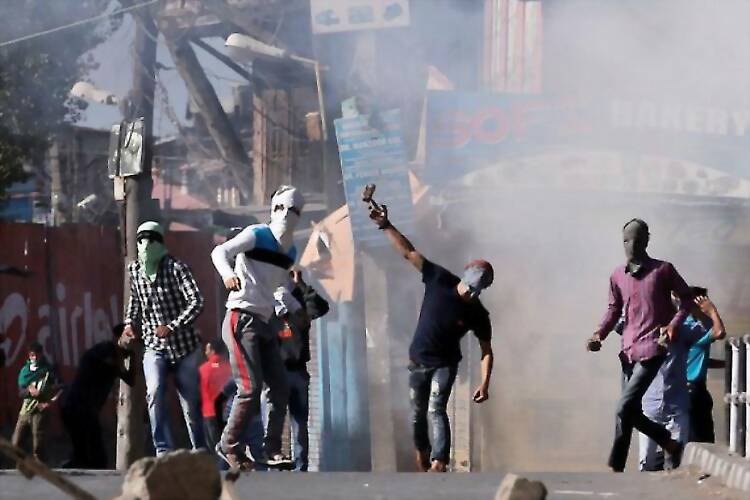
views
New Delhi: Driving around in Noida I was subconsciously looking out for stone-pelters.
No, Noida hasn’t changed. The National Capital Territory is the same as it was, one can still drive around in peace cursing the traffic snarls. It’s just me.
I just returned home after a month's assignment in Kashmir Valley and somehow every bend, every narrow road seem to hold the threat of a shower of stones.
The Valley has been on a lockdown for 100 days now, the security forces are on their toes. And the stress and tension spares no one, not even visiting journalists. If you have spent weeks travelling, driving in the Valley, chances are you won’t return the same man.
The first stones in the Valley came my way in Narbal as the CNN-News18 team headed towards Uri. And by the end of our tour, almost a month later, I knew every location that was a possible ambush point. The broadcast van stands out as the most favored target: to the protestors it is a mascot of the news machinery that ignores their side of the story.
“You don’t have to report for us just be balanced about what you report. The Indian media only lies,” shouted a young aspiring journalist, leading a group that surrounded us in Chandanwari.
I felt safe in my hotel. I felt safe at every active encounter spot despite the threat of bullets whizzing past. It was the drive in between that was a nightmare.
The entire route we would be on tenterhooks fearing that dreaded stone flying in from nowhere.

Of course, having Kashmiri colleagues is always a blessing and on several occasions long lost friends would pop up and give us shelter till violence ebbed along the highway.
The famous Kashmiri hospitality never fails. Everyone, we met while reporting, had a few nasty words for us but the heated argument would always culminate in an invitation home for tea.
On occasions, especially during the Pampore encounter, we were in an area surrounded by angry locals on the other side of the Jhelum River.
My Kashmiri colleagues had a tough time explaining CNN-News18’s position and how our coverage of the valley had been balanced. I was called over by one of the ring leaders and told that I as a guest of Kashmir would not be harmed, he even offered me lunch, but threatened to throw all our equipment into the river. We had to make a quick retreat.
Most television channels are hated in the Valley for their jingoistic coverage but the choicest abuses were reserved for two channels: one English and the other Hindi. Everywhere young boys stopped our vehicles and asked us to show our identity cards, being from CNN News18 helped on many occasions. Many Kashmiris believe that mainstream Indian media doesn’t reflect their side of the story.
“We feel sad for the family of soldiers killed in the Uri attack but what about the 91 people killed in the last four months? Who will tell their stories? Who will mourn or feel the pain of their families?” asked a senior citizen.
As has been captured many times over in the last few months, the Kashmir uprising this time around is far more complex and serious. Scribes are bearing the brunt this time around thanks to the polarizing debates taking place in TV studios based out of Noida, and not by reporters in Srinagar or Sopore or Baramulla.
A new generation of Kashmiris with not much regard for Kashmiriyat has only made the reporter’s task that much dangerous. Yes, of course, the story has to be told, there is a cycle to the way news channels run and this one too will run its course.
One feels restricted to the safe areas around Srinagar, few have attempted to travel to the areas affected by the shutdown.
A television journalist bound by the camera and live broadcast equipment is an easy target today. Yesterday, the camera gave access to corridors of power but in the valley it’s become an impediment.
This trend of blind hatred toward the messenger will help no one. There are other ways to tell the story in an era of social media; those who hate news channels must keep this in mind.
A journalist true to his calling will never let an impactful story go – it will be told.




















Comments
0 comment